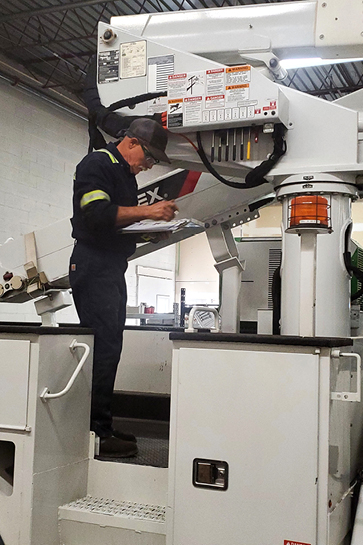Frequent Bucket Truck Boom Inspections: What to Do and When?
 Frequent boom inspection and tests should be performed immediately prior to first use of a bucket truck at the beginning of each shift. ANSI (the American National Standards Institute) and each bucket truck manufacturer have provided owners with detailed guidelines for conducting frequent (daily to monthly) tests that will enable them to best protect their equipment investments. The following summarizes some of the steps that need to be done when conducting frequent inspections and tests.
Frequent boom inspection and tests should be performed immediately prior to first use of a bucket truck at the beginning of each shift. ANSI (the American National Standards Institute) and each bucket truck manufacturer have provided owners with detailed guidelines for conducting frequent (daily to monthly) tests that will enable them to best protect their equipment investments. The following summarizes some of the steps that need to be done when conducting frequent inspections and tests.
Visual Inspections
The first thing an operator must do is visually inspect the boom by doing a complete walk around and looking for damaged components, cracks, excessive wear, as well as for any loose, deformed, or missing bolts, pins, fasteners, locking devices and covers.
Operators should then check all the boom’s controls and mechanisms for proper operation. This check includes making sure that the interlocks are all operational, that the controls are not sticking and return to neutral when released, as well as that the control functions and operations are clearly marked.
Next, operators need to conduct checks on the following:
The visual and audible safety devices on the boom for proper operation
The fiberglass and insulating components for visible damage or contamination
The hydraulic and pneumatic systems for observable deterioration and excessive leakage
The electrical systems for malfunctions, signs of excessive deterioration, dirt, and moisture accumulation
Also, look for missing or illegible operational and instructional markings.
Functional Tests
After the visual checks are done, the operator needs to perform a series of functional tests on the machine, which includes the complete set-up of the aerial device, including the outriggers. The operator should then cycle the aerial device functions through its complete range of motion from the lower controls. Finally, the operator must check the functionality of the machine’s emergency controls.
During this entire process, operators should make a note of any suspect items. At the end of the inspection and tests, each item on this list needs to be carefully examined and/or tested. Then, it needs to be determined by a qualified person as to whether any of the items constitute a safety hazard. All unsafe items must be replaced or repaired before the machine’s next use.
Owners need to make a commitment to following a regular maintenance routine and to making frequent and periodic inspections and tests a priority. These actions will keep bucket trucks working harder and lasting longer — and the utility crew more productive.
For more information on Terex Services inspection programs, visit https://www.terex.com/utilities/en/service/preventative-maintenance-programs.

.png?sfvrsn=cfc0900d_0)